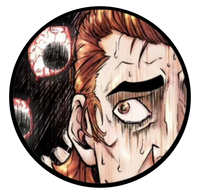Elevate Your Comic Art with Screen Tones
- icecomics1
- Sep 13
- 3 min read
Updated: Oct 6
What Are Screen Tones?
Screen tones, also known as Manga tones, are adhesive sheets or digital files featuring different dotted patterns. Traditionally, these were used in physical manga production, allowing artists to apply them directly to their work. Available in styles like dots, lines, and gradients, they help create shadows and highlights.
These tones can convey varying moods in scenes—dark tones for suspenseful moments or lighter patterns for comedic relief. The versatility of screen tones makes them indispensable in the comic artist's toolkit.
Traditional Method: Applying Screen Tones Like Stickers
One classic method of using screen tones is to apply them like stickers. This involves cutting out the desired shape from a sheet and placing it onto your artwork.
You can purchase screen tones from many online retailers. A popular choice is the Deleter website, known for its extensive range of screens that cater to both novices and professional artists. They offer packs ranging from basic dot patterns to intricate motifs.

Applying screen tones like stickers allows precise control over placement. Though it requires patience, many artists enjoy the hands-on experience.
Creative Stamping: Using Ink Dipped Stamps
Another method I've come across for creating screen tones involves using stamps that you dip in ink. This approach offers spontaneity, letting you craft fun and unique patterns.
Creating your own stamps can be fulfilling. However, if you prefer buying them, check out a recent Kickstarter project by artist Jarret Hartnell, who is developing a set of screentone stamps that includes a variety of customizable designs.

The Digital Approach: Using PNG or Photo Files
For digital artists, screen tones often come in the form of photo or transparent PNG files. This method allows layering in software like Procreate or Photoshop.
To incorporate those digital screen tones, create a new layer in your artwork and insert the screen tone file there. Then, either set the layer to multiply or find transparent ones so they mimic traditional methods as closely as possible in digital format. You can easily adjust the area the tone affects by simply erasing unwanted sections.
I actually offer some digital screen tones I designed myself, which are available for around $5.

The digital approach is efficient and grants high flexibility. You can easily modify opacity and scale, making it a popular choice among artists.
The Second Digital Approach: Brush Presets
Many drawing applications feature brush presets. Most of them allow for the installation of new brushes directly into the program. There are a few digital brushes out there that create screen tones just by the flick of the wrist, designed for quick application on your art. These brushes mimic the texture of traditional screen tones while allowing for fast shading and detailing.
If you're using Procreate, I actually have some comic-making brushes that have this particular brush preset available in my store for around $12.
Experimenting with Screen Tones
Trying out different methods is key to finding what works best for you. Whether you prefer the tactile feel of traditional screen tones or the convenience of digital options, there's no right or wrong way to use them.
I encourage you to explore various techniques. Mix and match methods to create unique effects in your artwork. You might find that a combination of traditional and digital approaches works best for your style.
Final Thoughts
For me, screen tones are an essential tool for any comic artist, whether you're sticking to traditional methods or embracing digital techniques. From sticker-like application to stamps and digital files, numerous options exist to integrate these tones into your work. The best way for you to find out which method you like is to experiment with them.
I hope this guide shines a light on a few techniques you can use yourself. Whether you are an experienced artist or just starting, good luck!
Let's Connect!
If you have any questions or want to share your experiences with screen tones, feel free to reach out. I love hearing from fellow artists and sharing tips and tricks. Let's build a vibrant community around our comic art!




Comments